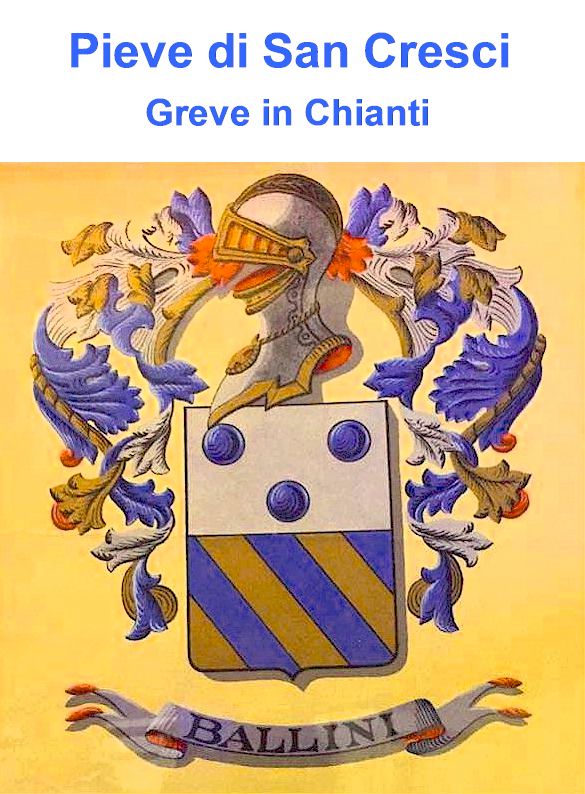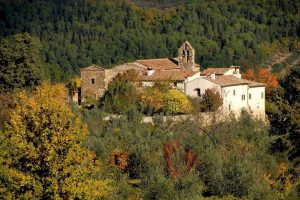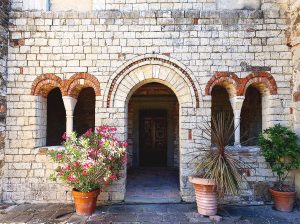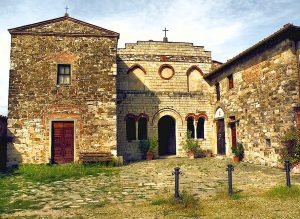The Pieve di San Cresci winery is named after the parish church (“pieve“) of the same name with which the winery shares a wall. This church was and still is the parish church of Montefioralle, just across the valley of the Becherale seasonal torrent (“borro“), and predates the church located within Montefioralle by several centuries. It might be the oldest extant church in Chianti and seems to occupy the location of a Longobard villa.
The pieve is first documented in a letter of donation held in the Monastery of Badia a Passignano, dated 963 AD. In its current form, the pieve appears considerably remodelled by numerous interventions made over the centuries. The most interesting part is the lower section of the facade which is in pure Romanesque style and in the church of the time it must have been a kind of narthex. It consists of two mullioned windows and is decorated with a dichromic motif in the archivolts.
The striking exterior of the pieve makes it an extremely rare church in the context of Romanesque architecture in Tuscany. In the 15 C, a portico was added, columns of which are surmounted by cubic capitals and hanger pulvins, completed by a second order at the beginning of the 19 C, in imitation of the lower one.
The colouristic play of the facade is lively, with the combination of the white Alberese stones and the red terracotta of the bricks that frame the portals and windows. The base part of the original bell tower remains on the right side, today replaced by a simple bell gable.
The interior of the church, extensively remodeled over the centuries, is in a sober Baroque style.
The church consists of a single nave covered with a lowered barrel vault and no windows. Both the walls and the ceiling are decorated with geometric monochrome frescoes. On the walls some statues of saints placed on shelves are depicted using the trompe l’œil technique. In the final part of the nave, there are two marble side altars, each surmounted by a niche containing a wooden statue representing to whom the altar is dedicated. The statue of the altar to the right is of the Sacred Heart of Jesus, that of the altar to the left is of Maria Addolorata.
The nave ends with a rectangular apse, covered with a dome without a drum and connected to the rest of the church by a serliana resting on two Tuscan columns. The main altar is made of marble.
Some works of art previously housed in the church have been collected in the Museum of Sacred Art of Greve.
In the choir, there is a pipe organ in the counter façade, built in 1869 by Cesare and Luigi Tronci. This instrument is enclosed within a simple wooden case of geometric structure, with an exhibition made up of main pipes arranged in a central cusp, with side wings. The transmission is fully mechanical and the console is a window, with a single keyboard of 50 notes with a first octave scavezza and a pedalboard with a scavezza lectern of 8 notes without its own registers and constantly connected to the pedal.



